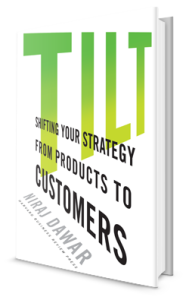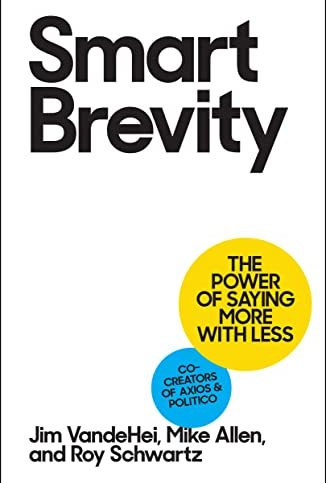Tilt: Shifting Your Strategy from Products to Customers
 In the golden age of the industrial era, the key resource was the means of production, best symbolized by Ford, which emerged and thrived because of its mastery of mass production techniques that allowed it to capitalize on vast economies of scale. Companies gained competitive advantage by making and selling more and better stuff. In other words, they dominated the upstream activities.
In the golden age of the industrial era, the key resource was the means of production, best symbolized by Ford, which emerged and thrived because of its mastery of mass production techniques that allowed it to capitalize on vast economies of scale. Companies gained competitive advantage by making and selling more and better stuff. In other words, they dominated the upstream activities.
Today, as explained by Niraj Dawar in his book, Tilt: Shifting Your Strategy from Products to Customers, the center of gravity has shifted to downstream activities. Manufacturing and even new product development can easily be outsourced, so there is no longer any competitive advantage in controlling upstream activities. The key resource is now the customer’s mind. In this new world, companies compete on economies of scope: rather than asking “how can we sell more of what we make to customers?”, they are asking, “what else does the customer need?” A great example is Amazon, which doesn’t sell better stuff, it sells stuff better.
To succeed in the new tilted landscape, CEOs and marketers (and may I add, salespeople) need to be asking themselves new questions.
- Why do customers buy from us?
- Why do potential customers not buy from us?
- What else does the customer need?
- How else can we slash the customer’s costs and risks?
- Are we criterion takers, or criterion makers?
- My own addition: how else can we help them grow revenues or serve their customers better?
How does a company compete for downstream competitive advantage? Although the book considers both B2B and B2C companies, I’ll focus here on the former. In Part 2 of the book, Dawar explains how a company can use its “perch”, or higher and wider perspective of the market, to bring innovations and fresh insights to customers. Because they deal with large number and wide range of different customers, they can see the whole forest, and use their knowledge to relay and connect ideas, provide benchmarking information, and make predictions that add value.
The second section of the book dives deep into the scarce resource that we should all be competing for: the customer’s attention and cognitive effort. Dawar poses an interesting thought experiment. If Coca-Cola somehow lost all its physical assets, would they be able to raise funds to restart their business? The answer is clearly yes. But if somehow the entire world got partial amnesia and forgot about the Coca-Cola brand, would anyone invest billions of dollars in the business? Clearly not. The point is that a brand, or a customer’s perception of your company, is a critical asset because it lowers the customer’s costs and risks of making a decision to buy. They don’t have to expend much attention or think very deeply about their decision. That’s why downstream competitive advantage can be not just sustainable but accumulative. Through network effects, habit, and confirmation bias, the rich brands tend to get richer by gaining more and more mind share.
One interesting insight the book provides is that what is important is not being first to market, but first to mind. Anyone remember the Erwise browser or Chux disposable diapers? The incumbents have managed to define and dominate the customers’ purchase criteria, and the only ways for a challenger to overturn this dominance is to either provide an offering that is clearly superior in the important criteria, or change the criteria of purchase. You can either be a criterion taker, or a criterion maker.
There’s so much more I could write about this excellent book, but I’ll let you take it from here. Let me just say that if you aim to be an intrapreneurial sales professional, you need to read this book soon, and you need to sit down and seriously reflect on the six questions above.
P.S. If you don’t have time to read the whole book, read Dawar’s summary article in this month’s Harvard Business Review. If you don’t have time to read that, you have my sympathy.



